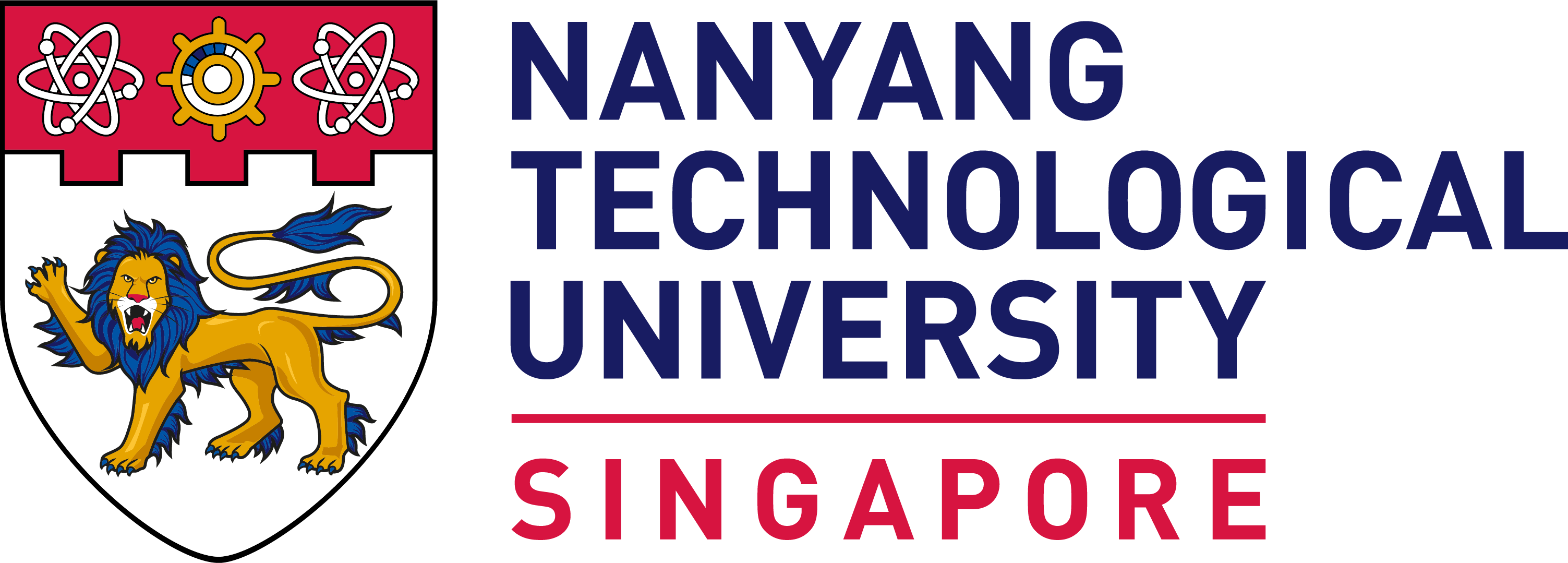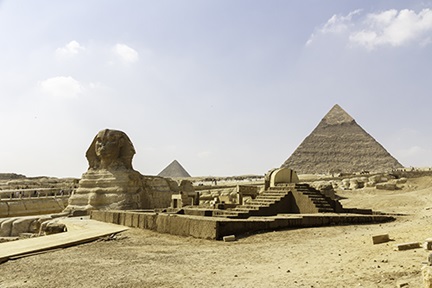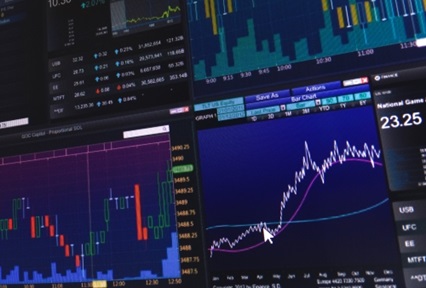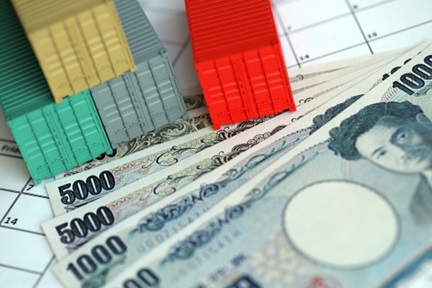By Ronak Gopaldas

Rapidly shifting global geopolitical and economic realities have seen the emergence of several new trade corridors and the associated infrastructure development. The advance of these new trade routes has typically been driven by strategically located emerging markets in the global south who want to provide trade transit alternatives that rival, if not supplant, more established conduits shaped in bygone times and are increasingly susceptible to disruption.
While the bulk of these new routes aim to provide alternate passage through the Middle East for goods traded between Asia and Europe, African states can leverage the changing trade landscape to drive their own economic development. To effectively do this, it will not only have to lean into its natural resource endowment and the growing demand for commodities, but it will require an acceleration of infrastructure investment, reducing trade red tape and ramping up efficiency. This piece will examine the evolving dynamics of international trade corridors, what Africa needs to do to seize emerging opportunities, and which African states are best poised to take advantage of the shift.
Changing lanes
Trade, the movement of goods from source to market, is at the very core of a functioning global economy. After a sharp contraction in trade volumes because of the COVID-19 induced shock, world trade in goods and services has bounced back and is estimated to have reached US$33trn in 2024, up US$1 trillion from 2023(1) (figure 1). Trade makes up nearly 30% of global GDP (US$115 trillion(2)).
 The flow of goods, which are typically transported along prescribed corridors via rail, sea or road, ideally follow the most efficient and cost-effective routes to minimise time to market and maximise buyer, seller and transporter profitability. These routes have gained ever-greater importance since the advent of “just-in-time” production, a process where goods are only produced on order to keep inventory and costs to a minimum. This production modality makes goods transportation particularly time sensitive. Border crossings (from one country to another), maritime geography (canals), and even digital channels act as chokepoints for trade, points where various road, rail, air, shipping or communication routes must converge to gain passage to the destination. These natural or man-made chokepoints act as a funnel, which, when blocked, create great time and economic inefficiency. Increasingly, a confluence of economic, geopolitical and other macro factors has begun to reshape the global trade environment and its networks, and trade route alternatives, have never been more important.(3)
The flow of goods, which are typically transported along prescribed corridors via rail, sea or road, ideally follow the most efficient and cost-effective routes to minimise time to market and maximise buyer, seller and transporter profitability. These routes have gained ever-greater importance since the advent of “just-in-time” production, a process where goods are only produced on order to keep inventory and costs to a minimum. This production modality makes goods transportation particularly time sensitive. Border crossings (from one country to another), maritime geography (canals), and even digital channels act as chokepoints for trade, points where various road, rail, air, shipping or communication routes must converge to gain passage to the destination. These natural or man-made chokepoints act as a funnel, which, when blocked, create great time and economic inefficiency. Increasingly, a confluence of economic, geopolitical and other macro factors has begun to reshape the global trade environment and its networks, and trade route alternatives, have never been more important.(3)
Land chokepoints
In 2022, Russia’s invasion of Ukraine blocked the country’s access to the Black Sea trade route(4), forcing many countries in Western Europe(5) and Asia to reassess their trade route options through the Northern Corridor. A new “middle corridor”(6) running from China through Asia, the Caucasus and the Black Sea onto Europe, experienced an immediate increase in freight volumes which continues to gather momentum as uncertainty in the region prevails.(7) Russia, previously a thoroughfare for East/West trade, too had to form new alliances(8) (North-South Corridor with Iran (9)) to circumvent the impact of sanctions imposed because of its invasion.(10)
Large producer countries in the east like China(11), and more recently, India(12), have been working to diversify their dependence on single corridors.(13) Since 2013, China has been developing its Belt and Road Initiative (BRI) with more than 40 African states in sub-Saharan Africa (and 34 in Europe and Central Asia) joining the initiative and garnering much needed infrastructure investment.
The India-Middle East-Europe Economic Corridor (IMEC(14)), was introduced by India (not a participant in the Chinese BRI) at the 2023 G20 summit and is being touted by the country as an alternative(15) transit route from the East to Western Europe and onwards without having to traverse the Suez Canal.(16) While the IMEC is still conceptual, and years if not decades from being realised, it is indicative of a growing trend toward finding trade route alternatives.
There is a clear move by Eastern producers, in collaboration with transit countries in Europe and the Middle East to develop alternative trade corridors which will become a growing threat to the established incumbents.(17) More broadly, it is widening the rift between the US / West and the Asian powerhouses whose relations are already strained under the threat of higher trade tariffs.
US President Trump’s first term in office saw an escalation in international “trade wars” and tariffs imposed on goods exported to the US. His second term has upped the ante considerably with global supply chain access being “weaponised” to further US geopolitical, economic, and security objectives.(18) The announcement of a new US tariff regime on “Liberation Day” (and subsequent suspension for all except China) threatens to upend the global trade landscape, if not derail global economic growth altogether. The US, however, is also vulnerable to supply chain disruptions, particularly of critical minerals (Africa) and semiconductor supply (Asia).(19) To bolster its geostrategic position and reduce its dependence on critical mineral imports, Trump has gone so far as to float the prospect of buying Greenland from Denmark[i], which is thought to contain material deposits of rare earth minerals.[ii]
The imposition of Liberation Day tariffs will inevitably push European countries (through the EU) to further strengthen alliances and supply chains with countries in the east who are facing the same tariff threat. While the Trump administration may well end up walking back on its initial tariff announcements, this could still hasten the development of new land corridors that circumvent the fallout of US tariffs.
Maritime chokepoints
Among the biggest global maritime trade transit points are the Suez (Asia to Europe controlled by Egypt) and Panama (Asia to North America controlled by Panama) Canals which link the east to the west, navigating multiple land and maritime borders through geographical chokepoints.

These canals have reduced maritime transit times from 24 days to 16 hours, and 67 days to 10 hours respectively. Any interruption to their smooth functioning has an enormous economic impact throughout the trade value chain[iii] and there are factors beyond geopolitical instability that can and are impacting these trade corridors.
In March 2021, the cargo vessel, EverGiven, on its way from Malaysia to the Netherlands, was blown off course, blocking passage through the Suez Canal for seven days. More than 100 ships had to be rerouted around South Africa’s Cape of Good Hope, adding 9,000km, 10 days and millions of dollars to the journeys.[iv] The delay is estimated to have cost global trade between US$6bn and US$10bn per day.(20) Passage to and from the Suez Canal off the Horn of Africa has become difficult ever since the Ansarallah movement (Houthis), in response to the Israeli military campaign in Gaza, launched attacks on Western cargo ships passing through the Red Sea.(21) While such attacks have largely ceased[v], the US has recently launched attacks on the Yemeni and Somali group which could bring new instability to the region.
The efficient functioning of the Panama Canal has also faced setbacks, this time from climate change and prolonged droughts which have lowered water levels, preventing the passage of larger vessels which must be rerouted around Cape Horn.
The saga of the EverGiven, the effects of piracy off the East coast of Africa, and the impact of climate change on the Panama Canal, and their global supply chain implications, are neat illustrations of the impact of trade corridor disruptions which have grown more frequent in recent decades, driving up shipping and insurance costs, and ultimately, the price to the end-consumer.
Digital chokepoints
Digital chokepoints don’t get the airtime that land and maritime disruptions receive but can be equally costly to the efficient movement of goods and services from origin to destination. In the context of trade, digital chokepoints refer primarily to internet and communications infrastructure (fibre, telco towers, cellular reception, digital platforms and even the devices themselves), or rather, a lack thereof.
In Africa in particular, digital chokepoints are a significant barrier to an acceleration of the continent’s trade. For one, the continent is heavily dependent on undersea fibre cables from Europe to keep it digitally connected to the rest of the world. On more than one occasion, these cables have been damaged resulting in slower communication or no internet at all as data is rerouted to alternative channels where the increase in traffic stalls flow.
Similarly, cellular coverage can be patchy, particularly in more remote areas in Africa inhibiting the growth of smaller businesses looking to expand their markets and distribution. The two primary obstacles to overcoming these chokepoints are bureaucratic and economic. Alternatives such as Starlink’s satellite communication are available and would make an immediate difference but as highlighted by the cases of South Africa[vi] and Lesotho[vii], face significant regulatory hurdles in becoming accessible. The cost of such technology is also often prohibitive.
In the context of the current trade war environment, African states dragging their feet on granting operating licenses to tech, data and communications companies could take a cue from Lesotho, which is looking to expedite Starlink’s entry to the country as a concession in negotiating better trade tariffs with the US. Greater competition will drive down costs, alleviate the delays at digital chokepoints and expand access to African businesses currently constrained by the continent’s digital communication challenges.
As the developed world accelerates rapidly toward the fifth industrial revolution (5IR) driven by advances in artificial intelligence (AI), data processing and automation, Africa must be an early adopted or risk losing another opportunity to catapult its growth and trade trajectory.
While Africa is seldom mentioned in the same breath as the new emerging corridors, largely because of its geographic separation, it can and must become part of the conversation to further its own development agenda and avoid being left further behind in its ambitions for global economic and trade integration. The continent has three primary levers to pull - demand for its vast natural resources; competition between great ‘east’ and ‘west’; and the African Continental Free Trade Agreement (AfCFTA).
Engaging a higher gear
Africa’s mineral resource wealth is well documented, but poorly leveraged. From gold, coal and copper to natural gas and the critical rare earth minerals needed to advance battery technology, the continent’s mineral deposits have long been coveted by markets in Asia, Europe and North America who have the beneficiation capacity Africa sorely lacks. The African Development Bank estimates that minerals make up as much as 70% of the continent’s exports and 28% of its GDP.(22)
Despite the high demand for commodities, Africa’s trade corridors and supporting infrastructure remain relatively underdeveloped. Intra-African trade makes up just 15% of total continental trade, compared to North America and Europe where intercontinental trade makes up more than half of all their trade. This is a function of production capacity, demand and logistical shortcomings. Much of the infrastructure that is in place was installed by the then colonial governments(16), and not sufficiently maintained or expanded to accommodate modern-day demand.(23) The lack of an integrated rail network means that as much as 80% of goods in Africa are transported via road adding time, cost and risk to the journey.
Africa’s infrastructure shortfall is not for lack of ambition. The Trans-African Highway Network (nine trade and transport highway corridors linking 54 countries and covering approximately 60,000km) was first proposed in the early 1970’s, but funding constraints, conflict, geographic and engineering challenges have proved to be daunting.(25) Despite such constraints Africa has achieved a remarkable success. The 4,400km Trans-Sahelian Highway from Senegal to Chad is nearly complete.(24) This is no mean feat. This impressive Dakar to Ndjamena highway is longer than the distance between Singapore and the Bangladesh port of Chittagong and has proved to be an important driver of growth, employment, connectivity and trade. Critically, it has provided the landlocked countries of Chad, Niger, Mali and Burkina Faso access to new markets and greater options to Atlantic Ocean ports.[viii] It provides an example of how greater inter-continental connectivity can be a catalyst for growth and development. Despite being the section of the Trans-African Highway Project closest to completion, many sections remain unpaved or in poor condition and maintenance remains an ongoing challenge.

Fundamentally, Africa’s collective transport network is fragmented and incapable of efficiently serving the ambitions of AfCFTA and greater intra-Africa trade. An argument that holds true is that Africa should be doing more to add value to raw materials on the continent before they are exported to foreign buyers. Even greater onshore beneficiation, however, will not be enough to solve the bottlenecks the continent’s logistical infrastructure experiences. The root cause of these inefficiencies must be addressed.
A finger is often pointed at Africa’s infrastructure gap, but a lack of physical infrastructure is not the only challenge. Instead, it is a combination of hard (roads, rail, ports) and soft (regulatory frameworks, customs protocols at borders, trade harmonisation, digitisation) infrastructure. The latter is easier to implement than the former but must be developed in tandem with physical infrastructure improvement.(26)
Green and digital corridors are gaining greater attention as a means to achieve quick wins in the quest to improve logistical efficiency the net-zero goal set for 2050.[x] Africa can make rapid progress on this front, even in the absence of more robust physical infrastructure. Simply put, green corridors refer to closer collaboration between transit points to reduce carbon emissions by developing and implementing energy efficient technologies, route optimisation and the use of more energy efficient vehicles.[xi] The Northern Green Freight Programme was launched by Kenya, Uganda, Rwanda and Burundi as far back as 2013 promoting improved fuel standards, eco-driver training and efficient vehicle technology.[xii] Green initiatives work hand-in-hand with digitisation, from automation and Artificial Intelligence (AI) route and port management to digital documentation exchanges that make customs and border crossing much more efficient.
China, more than most, has understood the need for both hard and soft infrastructure in Africa and rolled out extensive funding and investment on the continent through its BRI investments. The move is of course to serve their own economic interests and geopolitical agendas, but the continent has undoubtedly benefitted, albeit often at the cost of taking on more debt.
While Chinese investment on the continent is slowing, the foothold they have gained has not gone unnoticed by the US and Europe who are now playing catch-up. The race for access to critical rare earth minerals(27) such as the cobalt and lithium mined primarily in the Democratic Republic of Congo (DRC) has seen the west commit billions of dollars in financing to develop the Lobito corridor(28) which would get these critical minerals to the west coast port of Lobito in Angola.(29) It is one of the few large-scale infrastructure projects the US has committed to on the continent, demonstrating how vital they view these commodities.(30) The Chinese, who are funding a similar corridor for mineral extraction to the east through Tanzania, already own the bulk of critical mineral mining concessions on the continent and by far have greater processing and production capabilities than their western counterparts. While both the mooted Lobito and Tazara corridors are being built purely for mineral extraction by the funding countries, they can be leveraged by the African countries through which they pass, allowing local businesses to get their products to port for export to global markets.
Escalating tension and competition between the US and China, succinctly captured by the race to secure central African minerals through the west and east respectively, is an opportunity for African states to negotiate the most favourable terms and conditions for infrastructure investment that would serve their own developmental agenda as well as those of the investor countries. Doing so effectively, however, will be a fine balancing act that risks alienating one or the other and will require collaboration between African states.(30) Ideally, these investment discussions could be guided under the auspices of the African Union and with an emphasis on the AfCFTA. Engaging domestic private sector participation will also drive more broad-based development across sectors more widely than just mining and minerals.
The AfCFTA undeniably has cost and product access benefits, not just for African states, but for foreign buyers of African agricultural and manufactured goods.(3) Several African economic blocs already have established trade corridors which could be integrated into the more ambitious, foreign funded projects for benefits of scale. In this way, the regional trade corridors already in place would become feeder networks for African products to enter emerging trade corridors in Asia, Europe and the Middle East, expanding their market access. Conversely, they would also open Africa as a new market for producers in Europe and Asia, benefitting economies on both sides of the trade, stimulating growth and spurring new upstream and downstream industries.(30) African countries that already have some measure of manufacturing and logistics infrastructure in place will benefit more than the rest. Those where political instability or conflict persist, will potentially miss out altogether.
The winners
One of the biggest winners from Africa’s corridor development has been Mozambique. The Beira Corridor, commissioned in the late 1980’s and upgraded in the early 2000’s, connects Mozambique to its landlocked neighbours, Malawi, Zambia and Zimbabwe. It is a vital artery for the movement of agricultural (tobacco, tea, coffee) and mineral (lithium) goods as well as manufactured equipment through the port of Beira and has experienced strong growth since it was fully operationalised in the early 1990’s. Malawi, Zambia and Swaziland, have also seen an improvement in import and export performance as a direct result of the new access routes, with as much as 41% of goods imported and exported by Malawi arriving via the Beira corridor.[xiii] For Mozambique, the country’s trade and transport sectors (and even its tourism sector) have benefitted from the Maputo Corridor which links the country to Swaziland and South Africa and and is fast becoming an important gateway to and from Southern Africa.(31) Bottlenecks and inefficiency at South African ports have seen a significant amount of export traffic routed to the port of Maputo and on to eastern markets, with volumes reaching as much as 1,600 trucks per day and the port itself handling 30 million tons of freight per annum.[xiv]
As a production hub on the continent, and despite its own logistical chokepoints, South Africa also stands to benefit extensively from new trade corridors, both on the continent and beyond. Faster and smoother trade facilitation into Africa and into Europe and Asia will allow local goods to reach existing markets faster and open new markets entirely.
Angola and, Zambia and Tanzania stand to benefit enormously from the proposed Lobito and Tazara Corridors, and their associated fixed investment. The true extent to which they can realise these benefits, however, will be directly tied to stability in the DRC as the corridors are merely a means to an end for resource hungry investors. The safety and security of goods is paramount for funders who need to realise a return on their investment, and ongoing conflict in the region will delay or even deter corridor development entirely. Despite the promise of the Lobito and Tazara corridors, there has been no commitment from investors in either corridor to develop onshore processing and beneficiation capacity without which the DRC will simply become a more efficient extraction point, rather than realising any economic and industrial development. Lobito and Tazara act not just as a route for the extraction of minerals, albeit that it is their chief function, but can be capitalised on by surrounding business along the route to get their product to market.
Conclusion
The global trade landscape is changing, shaped by new geopolitical realities, evolving technologies, and maturing market demands. While Africa’s trade corridor development has not kept up with global trends, and its infrastructure already creaking under its current load, the continent does have levers to pull to generate investment from the east and west. To fully realise the opportunities presented by the evolution of trade corridors between Asia and Europe, Africa will have to attract both foreign investment as well as domestic private sector funds. Through continental collaboration, it will also have to ensure that regional stability and investor friendly policies become the foundation on which these investments materialise and grow. Without these principles in place, benefitting from the world’s changing trade landscape may prove a bridge too far.
Citations
References

 The flow of goods, which are typically transported along prescribed corridors via rail, sea or road, ideally follow the most efficient and cost-effective routes to minimise time to market and maximise buyer, seller and transporter profitability. These routes have gained ever-greater importance since the advent of “just-in-time” production, a process where goods are only produced on order to keep inventory and costs to a minimum. This production modality makes goods transportation particularly time sensitive. Border crossings (from one country to another), maritime geography (canals), and even digital channels act as chokepoints for trade, points where various road, rail, air, shipping or communication routes must converge to gain passage to the destination. These natural or man-made chokepoints act as a funnel, which, when blocked, create great time and economic inefficiency. Increasingly, a confluence of economic, geopolitical and other macro factors has begun to reshape the global trade environment and its networks, and trade route alternatives, have never been more important.(3)
The flow of goods, which are typically transported along prescribed corridors via rail, sea or road, ideally follow the most efficient and cost-effective routes to minimise time to market and maximise buyer, seller and transporter profitability. These routes have gained ever-greater importance since the advent of “just-in-time” production, a process where goods are only produced on order to keep inventory and costs to a minimum. This production modality makes goods transportation particularly time sensitive. Border crossings (from one country to another), maritime geography (canals), and even digital channels act as chokepoints for trade, points where various road, rail, air, shipping or communication routes must converge to gain passage to the destination. These natural or man-made chokepoints act as a funnel, which, when blocked, create great time and economic inefficiency. Increasingly, a confluence of economic, geopolitical and other macro factors has begun to reshape the global trade environment and its networks, and trade route alternatives, have never been more important.(3)



.tmb-listing.jpg?Culture=en&sfvrsn=8636ce67_1)





